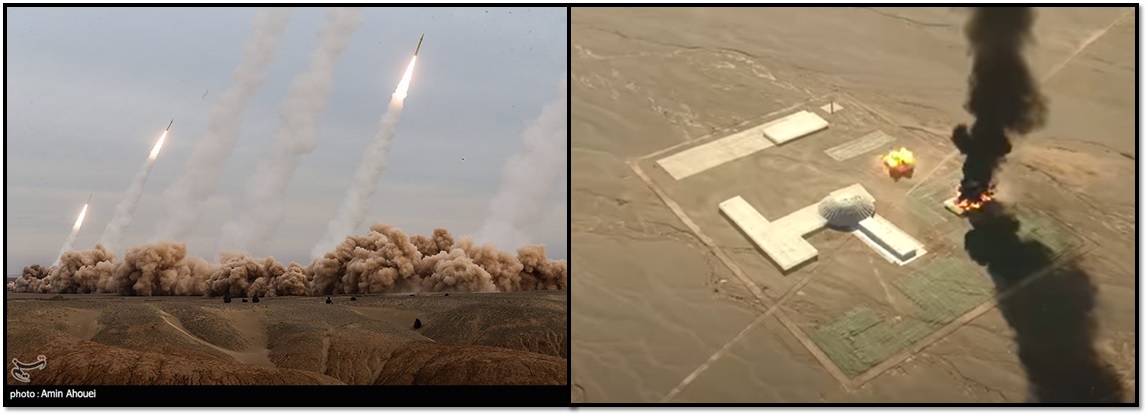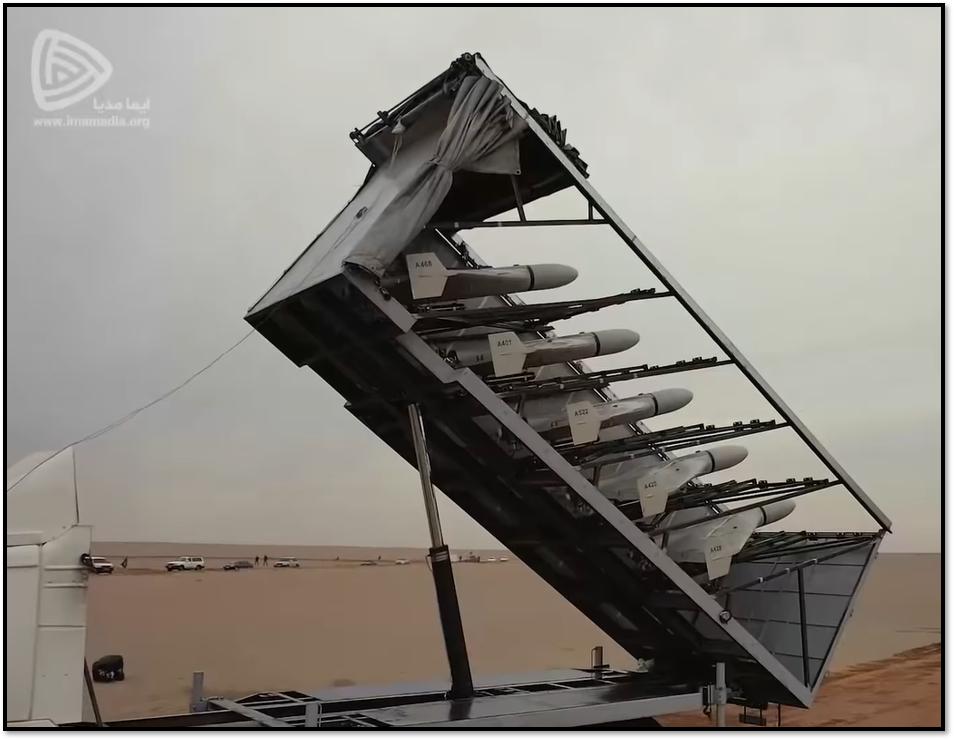Iran tested a wide variety of weapons, including ballistic missiles, drones and tanks, during a war game between December 20 and 24. The Great Prophet 17 exercise was held along the Persian Gulf coast in the southern provinces of Bushehr, Hormozgan and Khuzestan.

The ground, naval and aerospace units of the Islamic Revolutionary Guard Corps (IRGC) participated in the war game. Major General Mohammad Bagheri, the chief of staff of the Armed Forces, said that the drills were a response to the “recent empty threats of the Zionist regime,” a reference to Israeli officials discussing a potential strike on Iranian nuclear facilities.
During the war game, the IRGC simultaneously launched 16 ballistic missiles at a model of Israel’s Dimona nuclear facility. Major General Bagheri warned that the site in the middle of the Negev Desert would a be “prime target” if war broke out between the regional rivals. He claimed that Iran could overcome Israeli air defenses, including the advanced Iron Dome system. The drill was “not a show per se,” Bagheri added. “It was complete simulation of reality … [in which] the site will be entirely blown up."
All of the missiles were fired from mobile launchers – known as transporter erector launchers (TELs). The IRGC fired six types of missiles at the mockup of Dimona, including:
- The Sejjil is a medium-range ballistic missile with a range of up to 2,000 km (1,250 miles).
- The Ghadr is a medium-range ballistic missile with a range of up to 1,950 km (1,200 miles).
- The Emad is a medium-range ballistic missile with a range of up to 1,700 km (1,050 miles).
- The Dezful is a medium-range ballistic missile with a range of up to 1,000 km (620 miles).
- The Zolfaghar is a short-range ballistic missile with a range of up to 700 km (430 miles).
- The Zelzal family of rockets and missiles includes several variants with different ranges. The four used in the drill appeared to be Zelzal-2s with upgraded with guidance systems, potentially increasing the range from 210 km (130 miles) up to 300 km (185 miles).

Major General Bagheri warned that the 16 missiles were just “a small part of hundreds of missiles that can simultaneously hit any target in a country that conspires to attack the Islamic Republic, and cause total destruction.” General Amir Ali Hajizadeh, the commander of the IRGC Aerospace Force, claimed that Iran’s missiles could move in different directions, which would make intercepting them more difficult. “Some hundreds of billions of dollars of our enemy's investments have gone down the drain. In other words, they are useless now.”
The IRGC also flew at least four types of drones during the war game, including:
- The Shahed-129 is a heavy-weight drone used for surveillance and combat. It has a range of at least 1,700 km (1,050 miles).
- The Mohajer-6 is a medium-weight drone used for surveillance and combat. It has a range of up to 200 km (120 km).
- The Ababil-2 is a light-weight drone used for surveillance, training and combat. It has a range of up to 100 km (62 miles). Suicide variants were used in the drill.
- The Shahed-136 is a suicide drone with an estimated range of up to 2,200 km (1,360 miles).

During the war game, Iran unveiled a new launcher for the Shahed-136 that can be mounted on a truck. The launcher had spaces for five drones.
During an island defense simulation, the IRGC Navy tested ballistic and cruise missiles fired from patrol boats as well as drones. For the first time, it launched Fath semi-ballistic missiles. The short-range projectiles were launched from land at targets on the water.
“Our war game was to destroy the enemy before it can reach our shores,” Rear Admiral Alireza Tangsiri said. “The message of this maneuver to our enemies is that we will never allow a country to threaten Iran's territorial waters, we will definitely blind any enemy who seeks to threaten the country and cut the hands that want to encroach on Iran.”
The IRGC Ground Forces tested a new tank, the Karrar, which is based on the Soviet-era T-72. The Karrar was first unveiled in 2017, but had not been seen in service until the Great Prophet drill. The tank was fitted with special equipment that dampens the heat given off by the vehicle to conceal it from infrared radar detection.

The IRGC also used helicopters and armored vehicles to attack land targets. The IRGC Ground Force is a “reassuring guarantee of independence, territorial integrity, and national security for the country,” Major General Hossein Salami, the commander of the IRGC, said.

Garrett Nada, managing editor of The Iran Primer, assembled this report.
